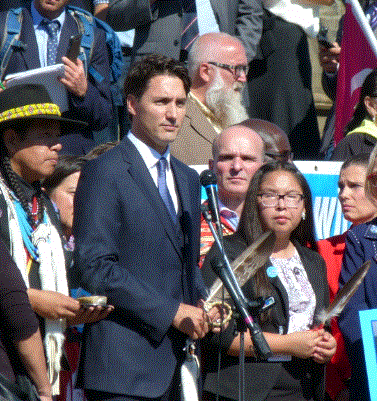Indian Self-Determination and Self-Governance Era 1968-present
2016
Missing and murdered Indigenous women (MMIW) epidemic and No More Stolen Sisters Movements

The Canadian government responds to mass protests and repeated calls for a national inquiry into missing and murdered Indigenous women and girls in Canada. Activists call the epidemic of MMIW a national crisis and genocide. In response, Prime Minister Justin Trudeau establishes the National Inquiry into Missing and Murdered Indigenous Women and Girls in September 2016. According to their findings, from 1980 through 2012, Indigenous women and girls represented 16 percent of all female homicides in Canada but represented only 4 percent of the female population in Canada. The number of Indigenous women who were victims of homicide increased from 9 percent to 24 percent from 1980 to 2015. From 2001 to 2015, the homicide rate for Indigenous women in Canada was almost six times higher than that for non-Indigenous women. Advocates argue that many more women are missing, with the highest number of cases in British Columbia. Some notable cases include 19 women killed in the Highway of Tears murders and 49 women from the Vancouver area murdered by Robert Pickton. In the U.S., Native activists have launched their own advocacy efforts to address the MMIW crisis as well. According to the Coalition to Stop Violence Against Native Women, American Indian women in the U.S. face murder rates that are more than 10 times the national average. Homicide is the third-leading cause of death among American Indian and Alaska Native women from 10 to 24 years of age, and the fifth-leading cause of death among those 25 to 34 years of age. (https://www.csvanw.org/mmiw/)